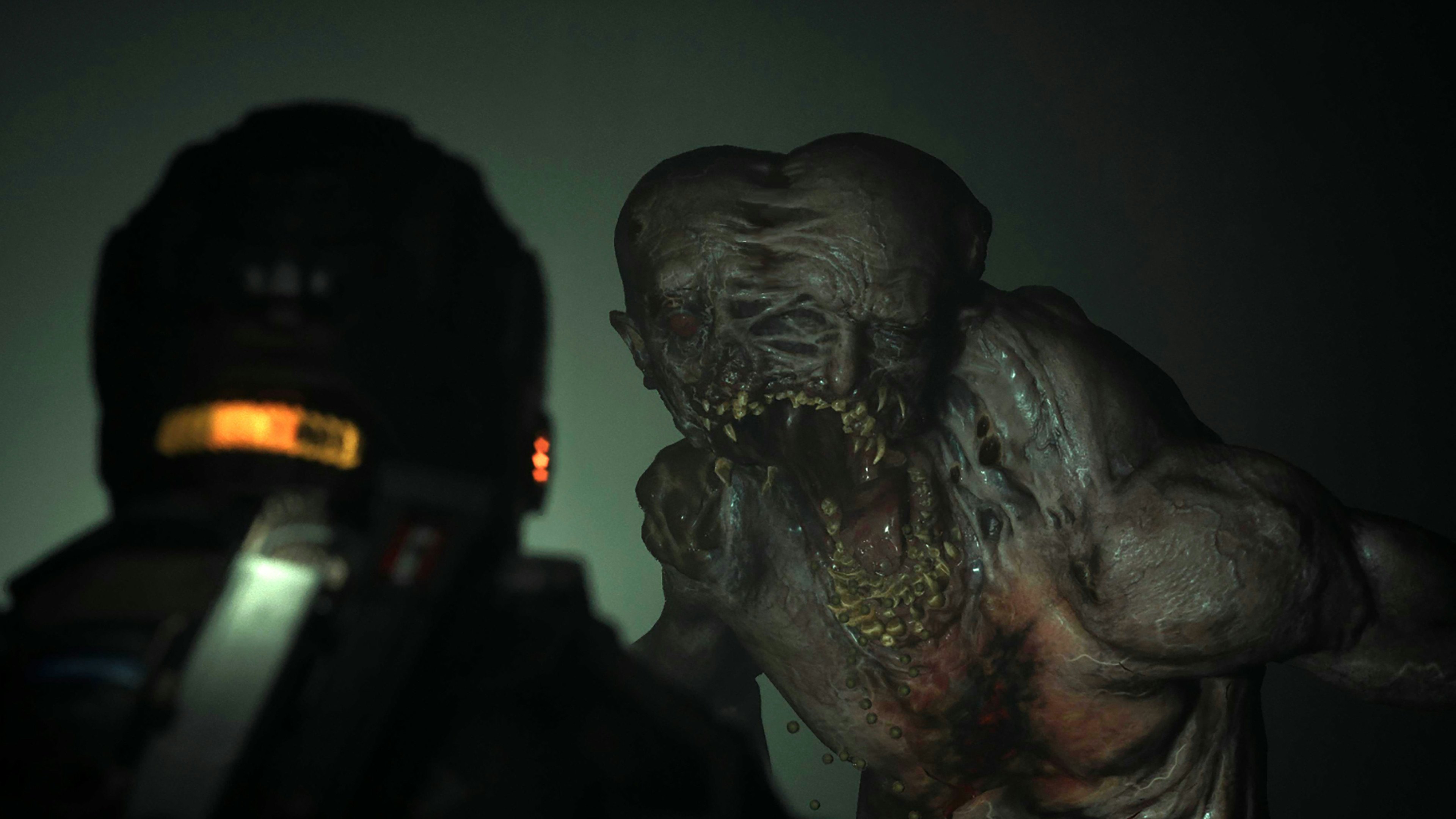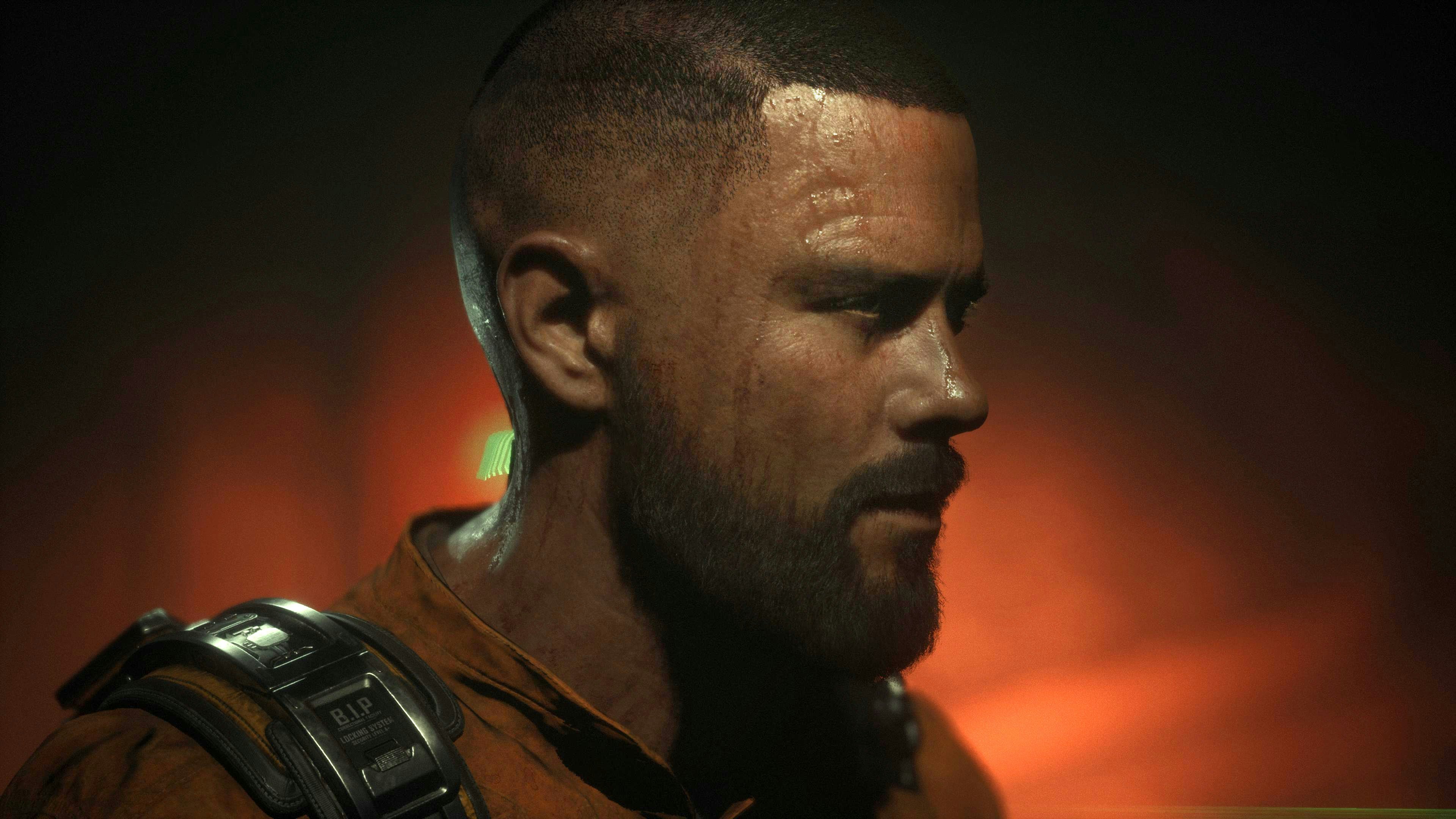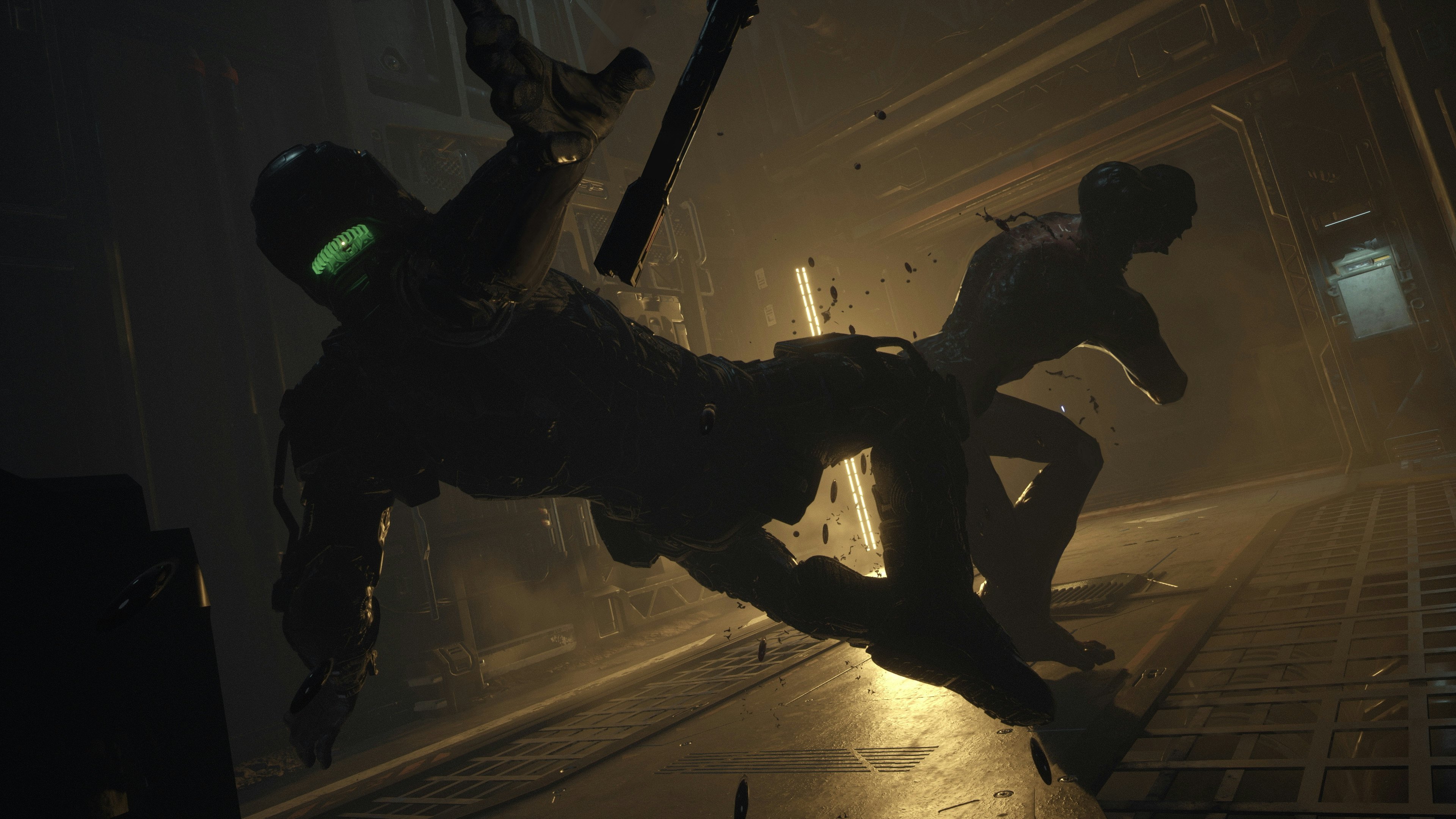
A shadow slinks around the corner like a gaseous cat.
A light flickers above, strobing to an unnatural beat. Silence looms large, weighing heavily on the prisoner below. In the distance lies a shape — uncanny, distorted, weird. The shape skulks toward you, slowly, cautiously, before darting toward the nearest wall and vanishing.
No game makes you feel a sense of dread quite like The Callisto Protocol.
“He went down the vent and ran away,” explains Mark James, chief technical officer at Striking Distance Studios. I’m sitting in a small room in Hall 4 of Koelnmesse, the chaos of Gamescom 2022 swirling around me. We’re discussing The Callisto Protocol just after it was presented to the masses, and how the monstrous mutated humans called the Biophage will scare the living daylights out of you.

“It was so strange to see, but it's actually by design. That [Biophage Grunt] looked at what happened before — he could see the kills,” James says. “And then he thought, ‘I need to get closer to attack successfully.’ Our AIs observe your behaviors up to that point and look at different ways to attack.
“So he went into the vent system. The worst thing for the player at that point is it’s like, ‘This guy's gone. I don't know where he's going to come out. He could be tracking me, he could be in the next room, he could be behind me.’ And in that particular playthrough, where we saw this happen, the AI actually came out of a vent the player had passed, grabbed his shoulder, and pulled him around to do the attack.”
This cunning escape came as a surprise even to some of the developers. James explains it was the product of systemic design that deliberately makes enemies more unpredictable. It’s just one small piece of what the team has dubbed “horror engineering.”
Engineering Horror

The process hones in on the conscious integration of not just fear itself, but functional mechanisms through which fear can be instilled and controlled within the overall experience. James insists that crucial differences exist between creating fear, instilling terror, and just plain scaring people. But how do you manipulate the relationship between these states to disorient the player and blur the boundaries between them?
The horror engineering has a scary level of detail: Sometimes, the strobing lights during an encounter will match the same beat as a monster’s footsteps, so you might subliminally associate the two. The next time the lights appear, you might subconsciously tense up, expecting the monster to appear — and it might, or it might not.
“In movie terms, they’re black cat moments,” James says. “Something comes along, normally a cat, and knocks something off the side, and you’re like, ‘Thank God, that wasn’t near me.’ But then the same thing happens in the same circumstances later — and it is.”
But there are some subtle differences between cinematic tension and what’s possible within the medium of games.
“You can program using psychology and movie references that we've worked with for years. You think there’s going to be an attacker at the top of the ladder because we designed that, and then we put it somewhere else,” he says. “That’s a perfect black cat moment. We think of fear like a balloon we’re filling with helium, like a slowly growing fear, and then we give you a scare. Then we blow up another one, but sometimes we don’t deliver on the scare, and the tension hasn’t been released.”
While many of Callisto’s horror mechanisms might seem scripted (and some of them are), much of the game’s makeup is systemic, meaning the developers can move things around. The fully functioning vent system is just one example of this.
“There will be scares that are unpredictable,” James says. “They won’t be the same on your next playthrough. The Biophage will make a different decision or mutate at a different time because you can’t control the mutations. If you’re quick enough to shoot the tentacles, you won’t be attacked. So even the way I play, I change the things that happen.”
Floating down a river of excrement

The Biophage are all humans mutated by a terrible disease, and the team went to great lengths to ensure that these mutations mirror real-life infections. Measles is a disease everyone has heard of, James muses, but how many people know exactly what the terrible rash looks like? Combining medical references with practical effects and body horror from pop culture means that these mutated humans still retain shadows of their former selves.
“A lot of enemy design starts off with, ‘I want this guy to have feet like scissors,’ and then you work back from there,” James says. “We worked forward from our humanity, and then looked at horrific infection design to see how it would distort. The biggest fear in an enemy is that distorted humanity, rather than going super fantastical and then working to put the humanity back in.”
Even a person or enemy’s eye is designed with ray-traced reflections, which might seem gratuitous, but to James, it’s a crucial part of maintaining the level of immersion necessary to establish fear. He explains that a player’s brain focuses on processing faces, which allows you to perceive minutiae that might seem irrelevant but can be immersion-breaking. Because your eye contains water, it was treated with the same reverence as other fluids in the game when it comes to being not just reflective, but also refractive.
Our demo featured a sequence in which you are caught in a violently rushing stream, dodging obstacles as you plummet down a seemingly endless series of waterfalls.
This is actually where all the prison’s sewage is processed.
“There’s a certain amount of disgust leading up to that,” James says. “And then you’re like, it’s even more frightening, because I’m going down this river of excrement.”
Disgust was also used to enhance the horror in the hydrosphere around the prison where all the food is grown. Instead of vibrant greens and blues, it’s a smattering of dirtier yellows. The team spent hours discussing color theory. James says the art director combed every room, matching colors to emotions in order to control the overall mood.
An unskilled hero

Unfortunately for the player, the game’s protagonist, Jacob, isn’t exactly a gun nut. He’s a pilot who was wrongfully imprisoned in a high-security penitentiary on an ice moon orbiting Jupiter, which contributes to his status as an everyman stand-in for the player. We can see this in how he fumbles with weapons or how he dodges with his hands in the air. He moves instinctively rather than intentionally.
“It's funny, I saw a comment the other day that was like, ‘Oh, give me a combat roll.’” says James. “And it’s like, you don't really get what we're trying to do.”
This design approach also affects the game on a functional level: Jacob holds and swings the stun baton as if it’s his first time doing so … because it is. So what happens when he gains restricted-access codes for the 3D weapon-printing kiosks installed all over the prison? All of a sudden, this untrained civilian with zero combat experience has access to an arsenal of powerful weaponry. In order to make this coherent with both the premise and systems of the game, Striking Distance needed to carefully consider how to treat weapons, enemy encounters, and the relationship between the two.
“You have to use [weapons] in combination, and read the individuals and how they're behaving to know there's a combination there,” James explains. “And you might discover that just through dying. And that's fine. You're going to die a lot in our game. We make no excuses.”
Dying — and dying a lot — is part of how you learn.
“I’ll be honest: in Dead Space, I used the railgun,” he confesses. “I didn't ever feel the need to pick up another weapon. In our game, you have to use them in combination. You will not survive by just using the pistol. There are never enough bullets or time for you to react. There’s actually a wrong time to use them, especially with mutations, because some guys are just [damage] sponges. I think that's the beauty of it: Our combat feels so much more strategic. And that's probably one of the distinguishing factors [from Dead Space] outside of characters and story.”
Killing Dead Space

Dead Space’s legacy looms large over The Callisto Protocol. Not only do the games share an uncanny resemblance, but Callisto game director Glen Schofield was the pioneer behind Isaac Clarke and the USG Ishimura. No matter how much developers might want to differentiate the two games, they’re intrinsically connected. James explains that the team took a distinctively “non-Dead Space” approach to this game to help put that connection to rest.
Dead Space’s Isaac may have been an engineer, but he still felt like a combat professional. With Jacob, “everything should feel like a shiv.” Jacob also has a backstory, and relationships with other characters, as opposed to Isaac’s relatively blank slate. There are plenty of characters and actors that the team has yet to reveal, too. All in all, James says: “We think we’ve moved sci-fi horror forward.”
James assures us that Callisto fulfills some of the nightmarish dreams Dead Space couldn’t achieve 14 years ago. Modern hardware makes all sorts of new things possible, including audio features like occlusion and portalling that make positional audio a much more powerful horror tool.
One enemy, the Rusher — its upturned torso and extra limbs being inspired by The Thing — has a cloaking mechanism. Thanks to the improvements in audio design, you can reliably track it across sizable distances via sound. But the natural soundscape of the prison and other Biophage moans and ambient noise accentuate the overall horror tenfold.
So, what does Striking Distance ultimately hope to achieve with Callisto, and what does that look like down the line?
“No developer starts a new IP and says, ‘I want this to be one game.’” James explains. “No developer wants that. We hope it's successful. We hope we get to tell more stories in the universe — we built a universe! There's a corporation that runs the planets. There's a backstory to why the virus exists. We built way more of a story than we can tell in one game and we definitely want to do more.
“The real hope for this game is that people look back on it with the same reverence they did for Dead Space, and say, ‘This is now the scariest game I’ve ever played.’”
The Callisto Protocol will be released for PS4, PS5, Xbox One, Xbox Series S|X, and PC on December 2, 2022.







